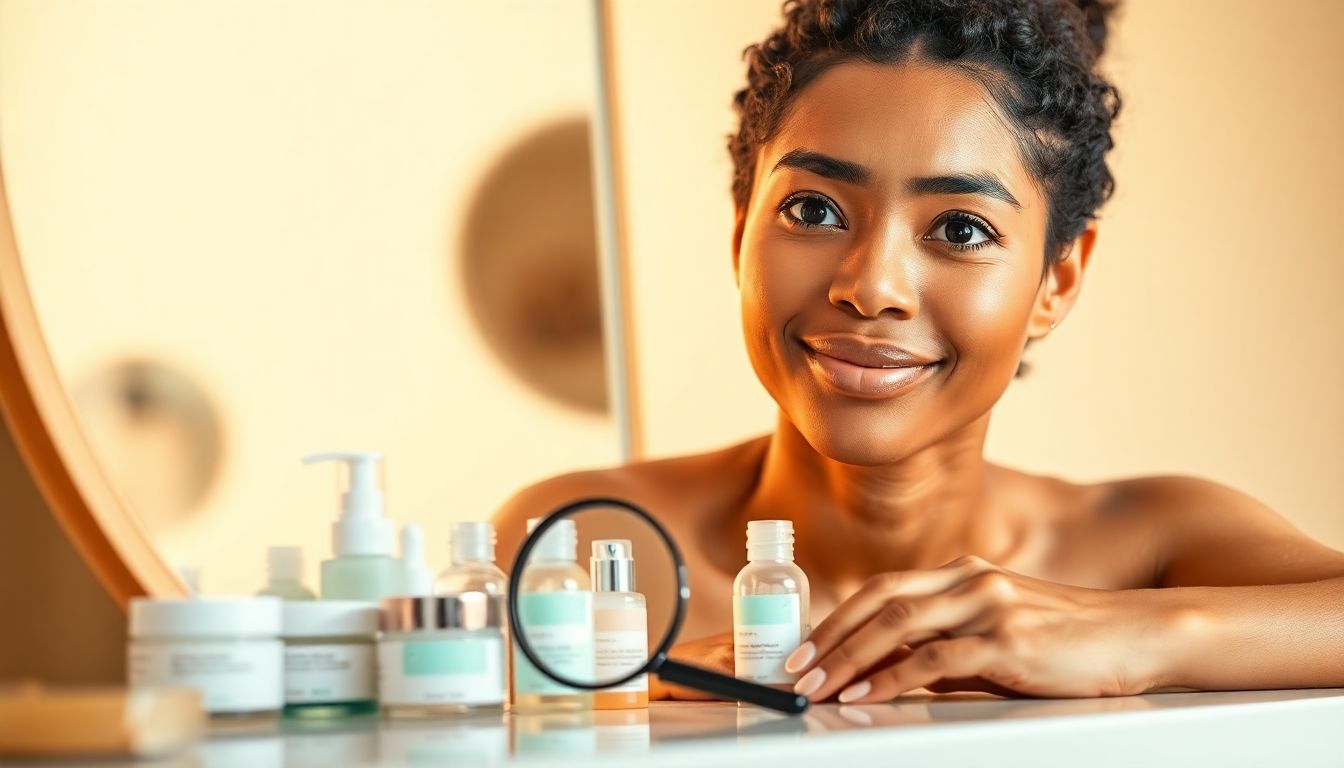
Ever feel lost in the skincare aisle? So many products, so many promises. You grab what looks good, hoping for a miracle. But instead, you get breakouts or dry patches. Sound familiar?
Many think one routine fits all. That's just not true. Understanding your skin type unlocks amazing results. The perfect skincare routine should address your unique needs.
We'll cover oily, dry, combination, and sensitive skin. Find the routine that makes your skin glow.
Decoding Your Skin Type: A Crucial First Step
Knowing your skin type matters. This is the base for a great routine. Products made for oily skin can harm dry skin. Using the wrong stuff can cause issues. Figuring out your skin type is easy. This unlocks a clearer, healthier face.
The Oily Skin Profile: Characteristics and Concerns
Oily skin looks shiny, especially on the nose and forehead. Pores might seem big, and it's prone to acne. The skin makes too much oil, called sebum. This excess oil clogs pores. Then, blackheads and pimples appear. Managing oil and preventing breakouts is key.
The Dry Skin Dilemma: Recognizing the Signs
Dry skin feels tight and sometimes itchy. It can look flaky. You might notice fine lines more easily. Dryness happens when skin lacks moisture. This can lead to sensitivity and aging signs. Hydrating and protecting it are very important.
Combination Skin: Balancing the Best of Both Worlds
Combination skin has oily and dry areas. Usually, the T-zone (forehead, nose, and chin) is oily. Cheeks can be dry or normal. This skin type can be hard to manage. Different areas need different care. Balancing hydration and oil control is important.
Sensitive Skin: Understanding Irritation and Redness
Sensitive skin reacts easily. It may get red or itchy from certain products. Fragrances and harsh chemicals often cause problems. Gentle, hypoallergenic items work best. Calming irritation and preventing reactions is vital.
Building Your Perfect Skincare Routine: Step-by-Step
A good routine is simple: cleanse, treat, moisturize, and protect. Adjust these steps based on your skin type.
Step 1: Cleansing – The Foundation of Healthy Skin
Cleansing gets rid of dirt, oil, and makeup. Do it every morning and night. This keeps pores clear and preps skin.
- Oily Skin: Use gel or foam cleansers. Look for salicylic acid or benzoyl peroxide.
- Dry Skin: Creamy cleansers are best. Avoid harsh sulfates.
- Combination Skin: A gentle, balanced cleanser works well.
- Sensitive Skin: Choose fragrance-free, hypoallergenic options. Aloe vera or chamomile are great.
Actionable Tip: Double cleanse at night. First, use an oil-based cleanser. Then, use a regular cleanser.
Step 2: Treating – Targeting Specific Concerns
Serums and toners tackle skin issues. These address acne, dryness, or aging signs.
- Oily Skin: Niacinamide or tea tree oil serums are good.
- Dry Skin: Hyaluronic acid or ceramide serums hydrate the skin.
- Combination Skin: Treat oily and dry areas differently.
- Sensitive Skin: Centella asiatica or green tea extract are calming.
Real-world Example: Retinol serum helps reduce wrinkles. Use it at night.
Step 3: Moisturizing – Hydration is Key
Moisturizer keeps skin hydrated. It also protects the skin barrier. Even oily skin needs moisture.
- Oily Skin: Use light, oil-free moisturizers or gels.
- Dry Skin: Rich, creamy moisturizers with shea butter are ideal.
- Combination Skin: Use a light moisturizer on oily areas. Use a richer one on dry spots.
- Sensitive Skin: Choose fragrance-free, hypoallergenic moisturizers.
Step 4: Protecting – Sunscreen is Non-Negotiable
Sunscreen prevents sun damage. Wear it every day, rain or shine.
- Oily Skin: Use oil-free or gel-based sunscreens.
- Dry Skin: Hydrating sunscreens are better.
- Sensitive Skin: Mineral sunscreens with zinc oxide are great.
Actionable Tip: Apply sunscreen 15-30 minutes before going outside. Reapply every two hours.
The Role of Lifestyle Factors in Skin Health
What you eat, how you sleep, and stress levels affect your skin. A healthy lifestyle improves your complexion.
The Impact of Diet and Hydration
Eat a balanced diet with antioxidants. Fruits and veggies protect skin. Drink lots of water too. Hydrated skin looks better.
Stress Management and Sleep
Stress causes breakouts and dull skin. Get enough sleep and manage stress. Exercise, meditation, and hobbies help.
Common Skincare Mistakes to Avoid
Avoid these mistakes to keep your skin healthy.
Over-Exfoliating and Harsh Scrubs
Don't scrub too hard. Over-exfoliating irritates the skin. Use gentle exfoliants once or twice a week.
Using Too Many Products
Too many products can overload skin. Keep your routine simple. Stick to what works.
Ignoring Patch Tests
Always test new products. Apply a small amount to your skin. Wait 24 hours. If there's no reaction, you're good to go.
Conclusion
Knowing your skin type matters. Tailor your routine for the best results. Cleanse, treat, moisturize, and protect daily. These steps creates healthy, glowing skin.
